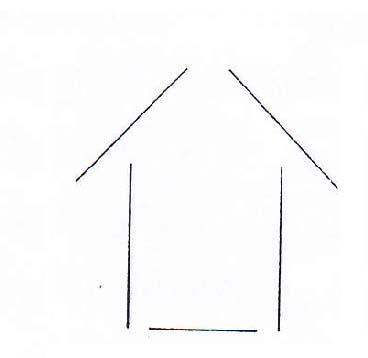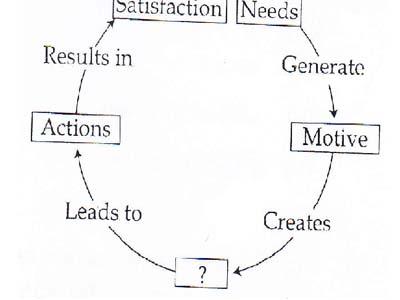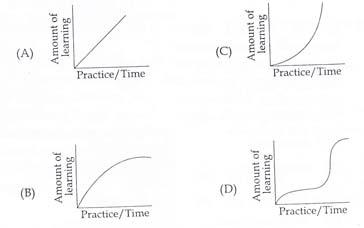Ktet category 1 psychology questions answers November 2016
Submitted By Nimi Sunil on 23 April 2017
Exams »Ktet »Sample Questions »Ktet category 1 psychology questions answers November 2016
Submitted By Nimi Sunil on 23 April 2017
1. out of the school subjects, Ambili, a fifth Standard student finds
mathematics as the most difficult subject. She could not be able to complete the
mathematics related homeworks perfectly. Most of the time she got confused with
addition(+) to (*) multiplication, and subtraction(-) to division(/).As a result
Ambili is backward in academic areas. Which type of learning disability is
experienced by Ambili?
a) Dyslexia
b) Dyscalculia
c) Dysgraphia
d) Dyspraxia
Ans. Dyscalculia
2. "Those who attend the special class on Saturday will be exempted from
homework". While saying like this, the teacher is trying to implement which type
of reinforcement?
a) Negative Reinforcement
b) Positive Reinforcement
c) Zero Reinforcement
d) None of the above
Ans. Negative Reinforcement
3. A teacher gave a toffee to a student who has answered correctly to the
question. Here, the teacher is trying to implement which of the following laws
of learning ?
a) Law of exercise
b) Law of multiple response
c) Law of attitude
d) Law of effect
Ans. Law of effect
4. Which among the following statement/s is/ are true with respect to
growth of an individual ?
a) Growth is influenced by maturation and learning.
b) Growth may or may not bring development.
c) Growth is the overall changes in an organism.
d) Growth is a functional change.
Ans. Growth may or may not bring development.
5. "An Honest Child", this is the opinion about Suresh, a Seventh
Standard Student by all the students and teacher of his school. According to
Allport's Theory of Personality Disposition, is belongs to which category of the
personality type?
a) Source traits
b) Secondary traits
c) Central traits
d) Cardinal traits
Ans. Cardinal traits
6. According to Spearman, a child show remarkable performance in mathematics
due to which of the following factor's his/her intellectual ability ?
a) Specific factor only
b) General and specific factor
c) General factor only
d) None of the above
Ans. General and specific factor
7. The five broken lines in the figure appears to be a house. Which among the
following Gestalt law explains this phenomenon ?

a) Law of Similarity
b) Law of proximity
c) Law of Closure
d) Law of Continuity
Ans. Law of Closure
8. Which among the following is the most suitable type of reinforcement for
first standard children who are poor in their abilities to learn a new thing ?
a) Continuous reinforcement
b) Fixed interval reinforcement
c) Fixed Ratio reinforcement
d) Variable reinforcement
Ans. Continuous reinforcement
9. Santhosh, a first standard student could not be able to answer the
following question asked by his class teacher. "If we add 3 apples with 2
apples, we will get 5 apples; then, if two apples were removed from a set of 5
apples, how many apples will be there ?" According to Piaget, the inability to
answer such a question by a primary student is due to :
a) Lack of reversibility
b) Presence of reversibility
c) Lack of object permanence
d) Lack of seriation
Ans. Lack of reversibility
10. Which period in the of a child is termed as 'toy age'
Psychologists ?
a) Early childhood
b) Infancy
c) Later childhood
d) Middle childhood
Ans. Early childhood
11. "In the present circumstances there is no use with a mere plus two
certificate." After failure in the plus two examinatron, Revathy told to her
parents like this. Here Revathy is adopting which type of defence mechanism ?
a) Identification
b) Projection
c) Rationalisation
d) Repression
Ans. Rationalisation
12. During early childhood, children use both hands to perform a task,
gradually as they grow older, they can do the same task with either of the
hands. Which principle of motor developments is reflecting in this
process ?
a) General to Specific trend
b) Cephalocaudal trend
c) Bilateral to Unilateral trend
d) Proximodistal trend
Ans. Bilateral to Unilateral trend
13. Find out the missing element motivation cycle.

a) Tension
b) Emotion
c) Aim
d) Hindrances
Ans. Tension
14. According to Freud, the intense emotional attachment showed by Aneesh
towards his- mother during the early childhood is called :
a) Oedipus Complex
b) Electra Complex
c) Psycho analysis
Ans. Oedipus Complex
15. While crying, infants utilize their whole body; but gradually as
they grow older, crying behaviour is lirnited to sorne of the organs in their
body. Which principle of development can be observed here?
a) Inter-relationship between different aspects of development.
b) Development is an individualized Process.
c) Development is a cumulative Process.
d) Development proceeds from general to specific
Ans. Development proceeds from general to specific
16. Which is the correct sequence for acquisition of language for
children ?
a) Listening --> Speaking --> Reading --> Writing.
b) Listening --> Reading --> Speaking --> Writing
c) Listening --> Writing --> Speaking --> Reading.
d) Listening --> Speaking--> Writing ---> Reading.
Ans. Listening --> Speaking --> Reading --> Writing.
17. Which among the following is not a factor that belongs to
emotional intelligence ?
a) Self-awareness
b) Empathy
c) Social Skills
d) Self-actualization
Ans. Self-actualization
18. Which among the following methods is most suitable for studying
the influence of anxiety in children on their academic achievement, by
controlling all other variables ?
a) Survey method
b) Experimental method
c) Observation
d) Case study
Ans. Experimental method
19. The process in the creativity proceeds in which sequential order ?
a) Preparation --) Incubation --) Illumination --) Verification.
b) Preparation --) Illumination --) Verification --) Incubation.
c) Preparation --) Verification --) Incubation --) Illurnination.
d) Incubation --) Preparation --) Verification --) Illumination
Ans. Preparation --) Incubation --) Illurnination --)
Verification.
20. Which among the following is the most suitable equation showing
the relationship between heredity and environment upon the personality of an
individual ?
a) P = H x E
b) P = H + E
c) H = P x E
d) E = P + H
Ans. P = H x E
21. Some of the statements related to grading system are given below. Identify
the most suitable ones.
a) It reduces the mental stress among children.
b) Learning limited to examination season only.
c) It reduces unhealthy competitions among students.
d) Learning becomes interesting and joyful.
(A) (i), (iii), (iv)
(B) (i),(ii), (iii)
(C) (ii), (iii), (iv)
(D (i) and (ii) only
Ans. (A) (i), (iii), (iv)
22. If the learning material is simple, or if learner has any previous
experience in learning task, which of the follow: learning curve will occur ?

Ans. b)
23. The educational programme extended to those socially deprived
children, to bring them up to the mainstream is known as
a) Compensatory Education
b) Compulsory Education
c) Acceleration
d) Enrichment programme
Ans. Compensatory Education
24. Vidhya, a four year old child upon seeing an elephant for the
first time cal1s it as 'cow'. Which type of reasoning happened here ?
a) Transductive
b) Inductive
c) Deductive
d) Symbolic
Ans. Transductive
25. In order to memories a number of new concepts taught in the classroom,
Raju, made a new term by taking the first letter of each concept. Here, Raju is
adopting which type of memorization technique ?
a) Acronym
b) Acrostic
c) Chunking
d) Metacognition
Ans. Acronym
26. Which among the foliowing is the contribution of heredity in the
development of a child ?
a) Intelligence, race, family status.
b) Gender, intelligence, glands.
c) intelligence, family status, nutrition.
d) Intelligence, gender, birth order.
Ans. Gender, intelligence, glands.
27. The suggestions given by a teacher to the parent of a child with special
needs (CWSN) are given below. Select the most appropriate ones.
a) You are not alone in this case.
b) Admit your child to another school
c) No one is Perfect in this world.
d) Enjoy each and every minute happiness of the child.
e) Try to compare your child with others and find the changes.
Ans. (a) , (c), (d)
28. Among the following statements, which is not true regarding the emotions
of children ?
a) Emotions are intense
b) Emotions are temporary
c) Emotions are stable
d) Emotions are frequent
Ans. Emotions are stable
29. Which among the following does not belong to Jerome S. Bruner's Stages of
cognitive development ?
a) Enactive Stage
b) Symbolic Stage
c) Iconic Stage
d) Intuitive Stage
Ans. Intuitive Stage
30. Which among the following is an example for intrinsic motivation ?
a) Studying for examination.
b) Participating in a running race for getting prize.
c) Reading a favorite book.
d) Working for getting salary.
Ans. Reading a favorite book.
Ktet Question Paper, Ktet Psychology questions, KTET Previous Year Question Papers with Answers,Ktet category 1 psychology questions answers November 2016,Ktet category 1 psychology questions answers November 2016,Kerala TET (KTET) Exams, Ktet category 1 psychology questions answers November 2016-Kerala TET (KTET) Exams